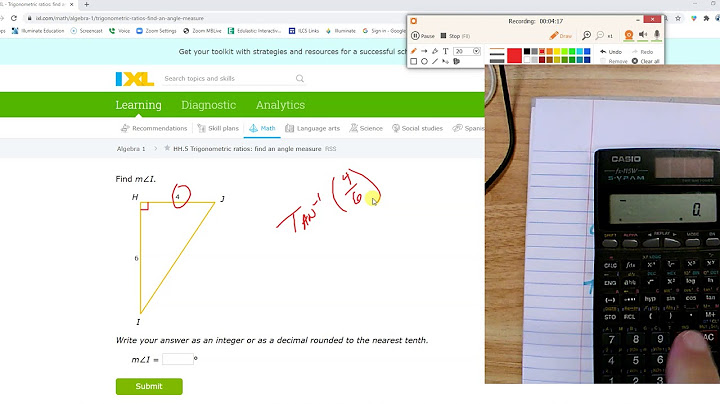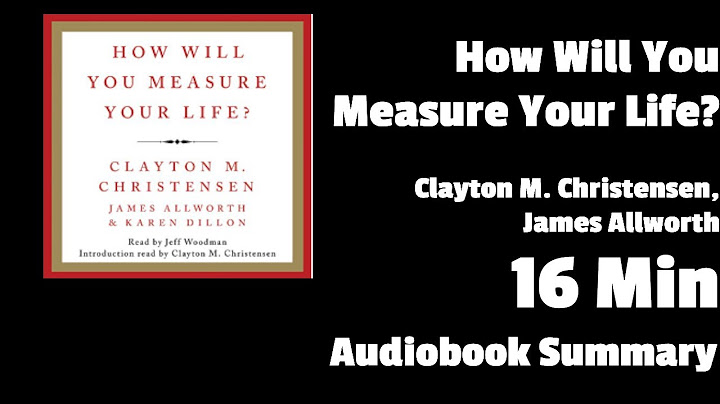 Show
Oxygen saturation is defined as the ratio of oxy-hemoglobin to the total concentration of hemoglobin present in the blood (ie Oxy-hemoglobin + reduced hemoglobin). Hemoglobin is an iron-containing protein bound to red blood cells and makes up nearly all the oxygen presence (there is a minute amount dissolved in the plasma). Hemoglobin is responsible for transporting oxygen from lungs to other parts of the body, where the oxygen can be used by other cells. Oxy-hemoglobin (HbO2) is the bright red hemoglobin that is a combination of hemoglobin and oxygen from the lungs. A hemoglobin molecule can carry a maximum of four oxygen molecules. 1000 hemoglobin molecules can carry a maximum of 4000 oxygen molecules; if they together were carrying 3600 oxygen molecules, then the oxygen saturation level would be (3600/4000)*100 or 90%. Here is an informational video by the New England Journal of Medicine that explains in detail what is oxygen saturation levels or SpO2 and the technology behind pulse oximetry. When arterial oxy-hemoglobin saturation is measured by an arterial blood gas it is called SaO2. When arterial oxy-hemoglobin saturation is measured non-invasively by a finger pulse oximeter or handheld pulse oximeter, it is called SpO2. Methods for measuring oxygen saturation levelPulse Oximeter: A pulse oximeter is a device intended for the non-invasive measurement of arterial blood oxygen saturation and pulse rate. Typically it uses two LEDs (light-emitting diodes) generating red and infrared lights through a translucent part of the body. Bone, tissue, pigmentation, and venous vessels normally absorb a constant amount of light over time. Oxy-hemoglobin and its deoxygenated form have significantly different absorption pattern. The arteriolar bed normally pulsates and absorbs variable amounts of light during systole and diastole, as blood volume increases and decreases. The ratio of light absorbed at systole and diastole is translated into an oxygen saturation measurement. CO-oximeter: A CO-oximeter is a device for detecting hypoxia and works similar to a pulse oximeter. CO-oximeter measures absorption at several wavelengths to distinguish oxy-hemoglobin from carboxyhemoglobin and determine the oxy-hemoglobin saturation even when the patient has carbon monoxide poisoning. Capnometer:A capnometer is an instrument for monitoring breathing rate and adequacy of ventilation. It attaches to the endotracheal tube and measure the carbon dioxide content in the inspired and expired air. It uses an infrared light to measure the amount of light absorbed by carbon dioxide molecules during breathing. It detects changes in carbon dioxide concentrations in patients who are hemodynamically stable, but not critically ill. Arterial blood gas (ABG) analysis: This is a blood test using samples extracted from an artery. The test determines the pH of the blood, the partial pressure of carbon dioxide and oxygen, and the bicarbonate level. Many blood gas analyzers will also report concentrations of lactate, hemoglobin, several electrolytes, oxy-hemoglobin, carboxyhemoglobin and methemoglobin. The arterial blood gas analysis determines gas exchange levels in the blood related to lung function. Reference
Oxygen saturation is a measure of how much oxygen is in your blood. Your organs and tissues need oxygen to work. Oxygen can "hitch a ride" in your red blood cells and travel through the bloodstream to get where it needs to go in your body. For most healthy adults, a normal oxygen saturation level is between 95% and 100%. An "O2 sat" level below this range requires medical attention because it means your body isn't getting enough oxygen. This article covers conditions that affect the amount of oxygen in your blood and the complications of having low oxygen saturation. You will also learn how to measure your blood oxygen levels and when to seek treatment. Verywell / Laura Porter How Blood Gets OxygenatedTo understand how blood gets saturated with oxygen, you have to know about the air sacs in the lungs called alveoli. There are millions of these microscopic air sacs in the lungs. They exchange oxygen and carbon dioxide molecules to-and-from the bloodstream. As oxygen molecules pass through the alveoli, they bind to a substance in the blood called hemoglobin. Oxygen "hitches a ride" on the hemoglobin as it circulates until it gets dropped off to the body's tissues. Then, hemoglobin picks up carbon dioxide from the tissues and transports it back to the alveoli. Once there, the cycle can begin all over again. The level of oxygen in your blood depends on several factors:
Most of the time, hemoglobin contains enough oxygen to meet the body's needs. However, some diseases reduce hemoglobin's ability to bind to oxygen. Each one of your blood cells contains around 270 million molecules of hemoglobin. Any health condition that limits your body's ability to produce red blood cells can result in low hemoglobin levels, which in turn limits the amount of oxygen that can saturate your blood. Conditions That Affect Oxygen SaturationBlood disorders, problems with circulation, and lung issues can prevent your body from absorbing or transporting enough oxygen. When this happens, it can lower your blood's oxygen saturation level. Examples of conditions that can affect your oxygen saturation include:
How to Measure Your Blood Oxygen LevelsOxygen saturation is measured in one of two ways: an arterial blood gas test (ABG or Sa02) or pulse oximetry (Sp02). ABG is usually only done in a hospital, while pulse oximetry can be done in other healthcare settings (like a provider's office) and even at home. ABGAn ABG value refers to the levels of oxygen and carbon dioxide in blood running through your veins. During an ABG, a nurse or lab technician draws blood from an artery, such as the radial artery in the wrist or the femoral artery in the groin. The sample is immediately analyzed by a machine or in a lab. Your ABG value can give your healthcare provider a sense of how efficiently the hemoglobin in your blood exchanges oxygen and carbon dioxide. Pulse OximetryA pulse oximetry reading reflects the percentage of oxygen found in arterial blood. Unlike the ABG test, pulse oximetry does not involve a needle (non-invasive). Instead, the test uses a sensor to read wavelengths reflected from the blood. The probe is attached to your finger, earlobe, or another place on the body. A pulse oximeter can give results on a screen in just a few seconds. People can monitor their oxygen saturation levels using wearable pulse oximetry devices—some smartwatches even have this feature. You can also buy a pulse oximetry device at your local pharmacy or online.
What Causes Decreased Oxygen Saturation?A drop in oxygen saturation in the blood is called hypoxemia. It can be caused by:
How to Raise Blood Oxygen FastIf your O2 saturation level is low, you need to call your provider. If it's very low, you might need to seek emergency medical care. You can also take a few steps right away to try to increase your blood oxygen levels:
Complications of Low Oxygen SaturationLow oxygen saturation in the blood can mean there's less oxygen in the body's tissues, including the organs and muscles. When this happens, it's called hypoxia. Your cells can adapt to a lack of oxygen when the deficiency is small. However, with larger deficiencies, cell damage and cell death can happen. Hypoxia usually happens because there is not enough oxygen in the blood (hypoxemia). However, it can also happen when:
Treating Low Oxygen SaturationGenerally speaking, an oxygen saturation level below 95% is considered abnormal. An O2 sat below 90% is an emergency. If someone's oxygen saturation is dangerously low, they will need oxygen therapy—sometimes urgently. The brain is the most susceptible organ to hypoxia. Brain cells can begin to die within five minutes of oxygen deprivation. If hypoxia lasts longer, it can lead to coma, seizures, and brain death. It is very important to find out the cause of low oxygen saturation so the problem can be fixed. For example, with chronic conditions such as COPD and asthma, the cause of hypoxia is usually low air exchange in the lungs and alveoli. In addition to oxygen therapy, steroids or rescue inhalers (bronchodilators) might be needed to open the airways. In circulatory conditions like heart disease, inadequate blood flow reduces oxygen delivery. In this case, medications that improve heart function, such as beta-blockers for heart failure or prescription medications to treat heart arrhythmias, can help improve oxygenation. With anemia, the blood supply to the tissues is reduced because there are not enough healthy red blood cells with hemoglobin to carry oxygen. Sometimes, a red blood cell transfusion is necessary to increase a person's level of healthy red blood cells. Summary Oxygen saturation is the measure of how much oxygen is traveling through your body in your red blood cells. Normal oxygen saturation for healthy adults is usually between 95% and 100%. If you have a chronic health condition that affects your lungs, blood, or circulation, regularly tracking your oxygen saturation is important. An O2 sat level below 95% is not normal. A level under 90% requires emergency care. Frequently Asked Questions
How does pulse oximeter work hemoglobin?A pulse oximeter can measure oxygen saturation. It is a noninvasive device placed over a person's finger. It measures light wavelengths to determine the ratio of the current levels of oxygenated hemoglobin to deoxygenated hemoglobin.
Is oxygen saturation the same as hemoglobin saturation?Hemoglobin oxygen saturation—or “oxygen saturation,” as it is commonly referred to in clinical practice—is the proportion of total hemoglobin in blood that is oxyhemoglobin (i.e., hemoglobin bound to oxygen), expressed as a percentage and abbreviated SaO2 (for arterial saturation) or SvO2 (for venous saturation).
Can a pulse oximeter detect low hemoglobin?Some studies have suggested that severe anemia may affect pulse oximeter readings. They have shown that in hypoxemic patients (SaO2 is below 80%) with very low hemoglobin concentrations, SpO2 may give falsely low readings and underestimate the real SaO2.
What are the two ways to measure the saturation of Haemoglobin with oxygen?Oxygen saturation is generated during blood gas analysis by one of two methods: direct measurement by CO-oximetry; or calculated from measured pO2. The calculation used to generate sO2 from pO2(a) is based on the relationship between the two described by the oxygen dissociation curve.
|

Related Posts
Advertising
LATEST NEWS
Advertising
Populer
Advertising
About

Copyright © 2024 ketiadaan Inc.














